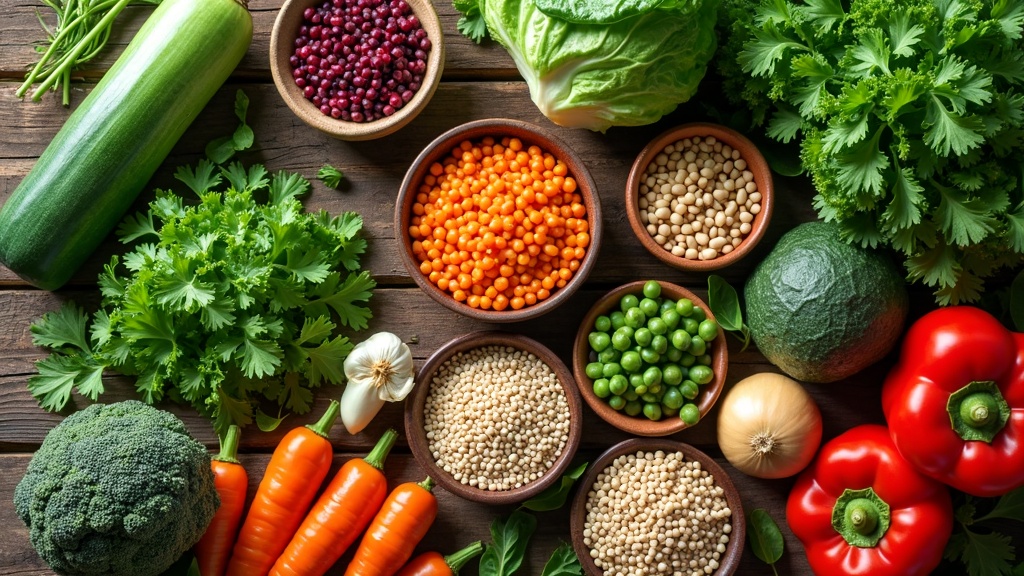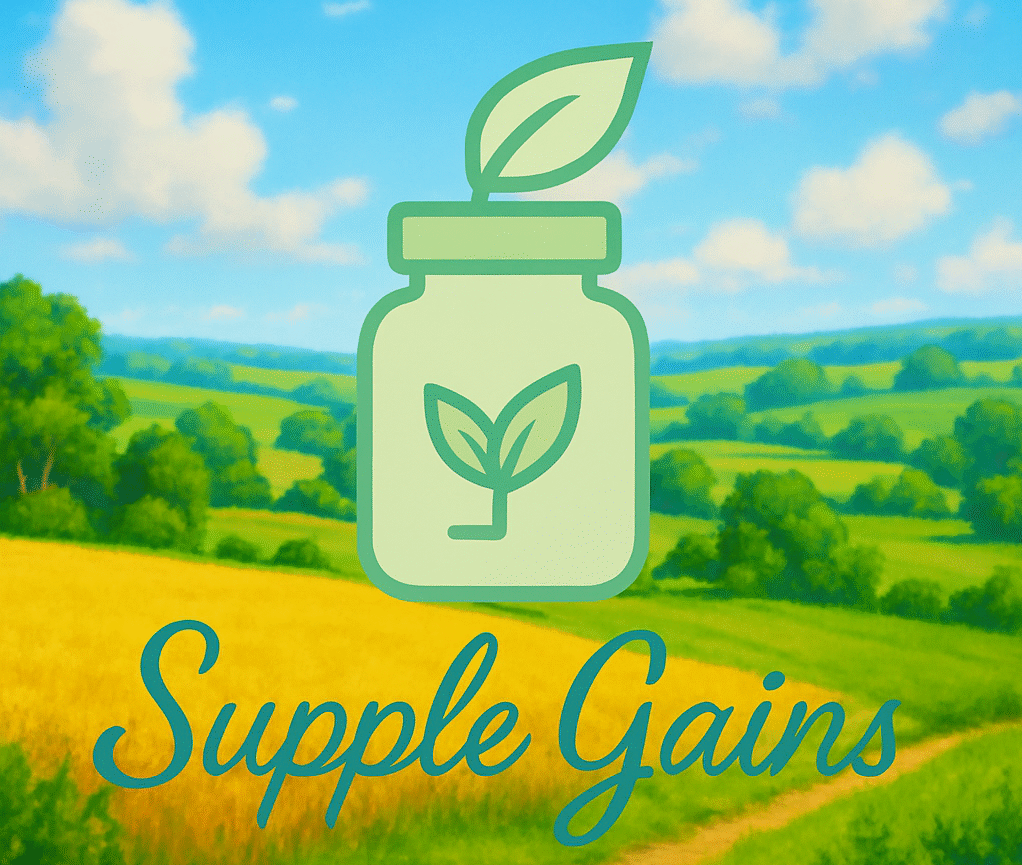Figuring out the connection between plant-based eating and the microbiome can seem complicated at first.
Switching toward more plants isn’t just about what’s on your plate.
It actually shapes billions of tiny organisms living in your gut.
The latest research shows that a thriving, diverse microbiome is linked with loads of health perks, and what you eat plays a pretty important role.
I’m breaking down how this all works, what plant foods do for your gut, and some tips you can actually use for better health every day.

What is the Microbiome?
The microbiome is basically a community of trillions of bacteria, fungi, and other tiny critters living mainly in your gut.
Most of the attention goes to your gut microbiome because it has the biggest variety and has a strong impact on your health.
These microbes help with breaking down food, making vitamins, supporting your immune system, and even sending signals that affect your mood and brain health.
Each of us has a unique mix of these microbes.
If you’ve heard about “good” and “bad” bacteria, that’s part of it.
Some bacteria can protect you from illness and help digest tough foods, while others are a bit less friendly.
Keeping the helpful types thriving often depends on what you feed them.
That’s where a plant-based diet comes in handy for your body and mind.
How Plant-Based Eating Affects Your Gut
Plantbased eating focuses on foods like veggies, fruits, grains, beans, nuts, and seeds.
Eating more of these can switch up your microbiome to favor bacteria linked with better gut health, reduced inflammation, and even a lower risk of chronic diseases.
The secret sauce is fiber.
Most people don’t get enough fiber, but plantbased foods are loaded with it.
Since our bodies can’t digest it on their own, fiber becomes food for our gut bacteria, leading to cool byproducts called short chain fatty acids (SCFAs).
These SCFAs help nourish your gut lining, control inflammation, and even help keep blood sugar levels steady.
- Prebiotics: These are special types of fiber (like inulin and resistant starch) in plant foods that feed good bacteria and help them grow.
- Polyphenols: Think of these as plantbased antioxidants found in foods like berries, tea, and cocoa. Gut bacteria love to munch on them, producing compounds that may help lower inflammation.
- Diversity: Eating a wider mix of plants usually means a more diverse microbiome, and variety in your gut microbes is generally linked with better health overall.
Getting Started with Plant-Based Eating for Gut Health
Switching up your eating habits doesn’t have to be complicated or intimidating.
I’ve found that making small changes, like adding a new veggie to meals each week or swapping out animal proteins for beans every now and then, makes the transition much easier and less overwhelming.
- Start Slow: Too much fiber too fast can lead to some uncomfortable belly bloating or gas. Giving your gut time to adjust is key for a good experience.
- Go for Color: A rainbow of fruits and veggies means you’re getting a variety of fibers and nutrients to support a healthy gut.
- Add Fermented Foods: Yogurt, kimchi, sauerkraut, and tempeh are packed with live probiotics, which can give your microbiome a boost and extra resilience.
- Don’t Forget Whole Grains: Options like oats, quinoa, and barley are solid sources of fiber, B vitamins, and other gutfriendly nutrients. Including at least some whole grains in your weekly menu can step up your gut health.
Things to Know Before Making Big Changes
It’s tempting to get into a plantbased diet headfirst, but there are a couple of practical things you’ll want to keep in mind for balancing your gut health and overall nutrition.
Planning ahead makes adjustments much smoother and more enjoyable.
- Transition Time: If you aren’t used to a highfiber diet, slowly add more plantbased foods over a few weeks. This gives both your gut bacteria and your digestive system time to catch up.
- Protein Sources: Beans, lentils, tofu, tempeh, nuts, and seeds all pack plenty of protein. Pair a few different ones across meals to get what you need and mix in some variety.
- Watch Iron and B12: Some nutrients, like vitamin B12 and iron, are a little harder to get from plants alone. Sometimes a supplement or a fortified food helps cover those gaps, especially if you go mostly or fully plantbased.
- Stay Hydrated: Extra fiber soaks up water, so increasing your fluid intake helps keep digestion moving smoothly.
Dealing With Common Challenges
I’ve heard from plenty of people who want to swap over to plantbased eating but aren’t sure how to manage some typical roadblocks.
Here are a few practical solutions that can make all the difference for a smoother ride:
Bloating and Gas
More fiber can sometimes mean more trips to the bathroom or just feeling uncomfortably full when you first start.
Gradually adding fiber, drinking more water, and using cooked veggies instead of lots of raw ones at first usually helps a lot.
Getting Enough Protein
Swapping meat for plant foods sometimes raises questions about getting enough protein.
Mixing up your plant protein sources and using foods like lentils, chickpeas, and tempeh makes a big difference.
Protein-packed snacks using nuts or seeds can help, too.
Nutrient Shortfalls
Pay a bit of extra attention to nutrients like vitamin B12, iron, omega3s, and calcium.
You don’t have to stress about these, but reading labels and adding fortified foods (like plant milks) or supplements if necessary can fill in the gaps and keep your body well fueled.
Eye-Catching Features of a Healthy Microbiome
A balanced plantbased diet can feed the “good” bacteria, putting your microbiome to work in a bunch of ways you might not even notice at first.
Here are some daily perks I’ve personally experienced or seen in others:
- Better Digestion: Regular, predictable digestion is a nice bonus. Fiber and helpful bacteria keep things moving without the sluggishness or discomfort common with low fiber diets.
- More Stable Energy: Fewer spikes and crashes, since fiberrich carbs break down slowly and keep blood sugar nice and steady. This steadiness often leads to more focused days without as many slumps.
- Improved Immunity: A robust microbiome can help defend against minor infections and balance your body’s response to inflammation, acting a bit like a natural shield.
- Brighter Mood: The gutbrain link is real. A happy gut often means more balanced mood and less stress. It turns out feeling good inside really can impact your mood every day.
Frequently Asked Questions
People moving toward plantbased eating to support the microbiome tend to have some common questions.
Here’s what usually comes up in my conversations and a few quick answers to help you out:
Is a totally plantbased diet needed for a healthy microbiome?
Not at all. Even small changes matter.
Adding more veggies, fruits, or whole grains to what you already eat can still increase the diversity of your gut bacteria.
You don’t have to go all in to see major benefits over time.
Do I need to take probiotic supplements?
Most people can get plenty of benefits from fermented foods like yogurt, kimchi, or miso.
Supplements aren’t always needed, but some people find them helpful after antibiotics or for certain digestive issues.
Checking with a healthcare provider is always a good idea if you’re unsure what’s best for you.
Can kids or older adults eat plantbased for gut health?
Absolutely, though extra care to get enough calories and key nutrients is important.
Kids have slightly different nutrition needs, so mixing plant foods with other healthy options can work really well.
For older adults, focusing on protein and key vitamins helps support a strong immune system and healthy digestion.
Practical Ways to Support Your Microbiome Every Day
Piling your plate with more plants is a solid long-term move, but little day-to-day choices make a difference, too.
Here are some habits that genuinely help your microbiome thrive and keep you feeling your best:
- Rotate your fruits and veggies, trying new ones often to boost microbe variety and keep your meals interesting.
- Include at least one serving of fermented food most days (yogurt, sauerkraut, or kombucha are easy starts for busy routines).
- Switch up your whole grains. Oats, barley, quinoa, brown rice, and more all offer unique benefits for gut bacteria and taste buds.
- Snack on seeds and nuts for healthy fats, extra fiber, and longer-lasting fullness. Almonds, chia, or sunflower seeds make great on-the-go options.
Making plantbased eating work for your microbiome is about the gradual tweaks rather than strict rules or perfection.
Most people notice the best results — think smoother digestion and better energy — when they focus on variety, keep things colorful, and pay attention to their own body’s signals along the way.
Your gut will thank you for even the smallest changes, and you’ll likely feel the benefits in more ways than one.
